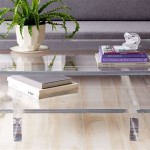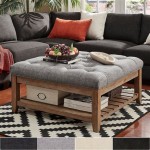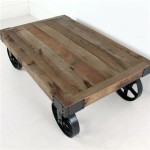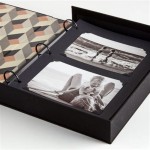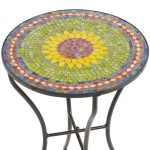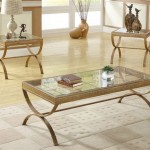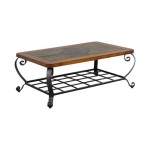An Introduction to Coffee Tables, Ottomans, and Chairs: A Design Lexicon
The arrangement of furniture within a living space is a multifaceted exercise, encompassing considerations of aesthetics, functionality, and spatial dynamics. Three pivotal elements in this orchestration are coffee tables, ottomans, and chairs. Each of these pieces serves distinct purposes, and their successful integration into a room depends on understanding their individual characteristics and their synergistic potential.
This article aims to provide a foundational understanding of coffee tables, ottomans, and chairs, covering aspects such as their historical evolution, diverse styles, material considerations, and principles of placement within a room. By exploring these fundamental elements, the reader will gain a lexicon for understanding and manipulating these key furnishing components.
The Coffee Table: A Centerpiece of Functionality and Style
The coffee table, as a modern furnishing staple, has roots tracing back to the late 19th century. Prior to its widespread adoption, similar low tables were prevalent in European salons, serving as platforms for tea services and decorative objects. The formal inception of the coffee table, however, is largely attributed to the Victorian era and the simultaneous rise of coffee consumption as a social ritual. Early iterations were often significantly higher than contemporary versions, intended to be easily accessible from seated positions during afternoon tea.
Over time, the coffee table underwent significant stylistic and functional transformations. The advent of modernism in the early 20th century saw a shift towards simpler, more geometric designs, often utilizing materials like glass, metal, and molded plywood. The primary function expanded beyond merely supporting beverages and snacks, becoming a repository for books, magazines, remote controls, and other living room essentials. Contemporary coffee tables encompass an extraordinary range of styles, from minimalist Scandinavian designs to ornate, antique-inspired pieces.
The selection of a coffee table hinges on several key factors. First, the size and shape should be proportionate to the surrounding furniture, particularly the sofa or sectional. A general guideline suggests that the coffee table should be approximately two-thirds the length of the sofa. The height should ideally be within a few inches of the sofa's seat height to facilitate ease of use. Shape is another important consideration. Rectangular coffee tables are well-suited for longer sofas, while round or oval tables can soften the angularity of a room. Square coffee tables work particularly well in smaller spaces or when paired with sectionals.
Materiality also plays a crucial role in defining the aesthetic and durability of a coffee table. Wood, ranging from hardwoods like oak and walnut to softer woods like pine, offers warmth and versatility. Glass, often paired with metal frames, lends a sense of lightness and transparency. Stone, such as marble or granite, provides a luxurious and durable surface. In recent years, materials like concrete and reclaimed wood have gained popularity, reflecting a growing interest in industrial and rustic aesthetics.
The Ottoman: Versatility Personified
The ottoman's origins predate the coffee table by several centuries, tracing back to the Ottoman Empire. These early ottomans were essentially cushioned platforms or benches, often placed against walls and used for seating or lounging. They were typically upholstered in rich fabrics and adorned with elaborate embellishments, reflecting the opulence of the Ottoman court.
Over time, the ottoman evolved and migrated to Europe, where it became integrated into drawing rooms and salons. Early European ottomans were often circular or oval in shape and frequently featured a central backrest, resembling a small, armless sofa. By the 19th century, the ottoman began to shed its formal connotations and became more associated with comfort and relaxation. It also began to diversify in form, ranging from simple footstools to large, multi-functional pieces.
Today, the ottoman remains a highly versatile furnishing element, serving a variety of purposes. It can function as a footrest, an extra seat, a coffee table (when topped with a tray), or even a storage unit. The choice of ottoman is largely dependent on the specific needs and aesthetic preferences of the user.
When selecting an ottoman, size is a primary consideration. If the ottoman is intended primarily as a footrest, it should be of a height that allows for comfortable leg extension when seated. If it is to be used as a coffee table substitute, it should be approximately the same height as the sofa and large enough to accommodate drinks and snacks. Shape is another important factor. Square and rectangular ottomans are generally more functional, providing a larger surface area. Round and oval ottomans can soften the lines of a room and create a more relaxed atmosphere.
Upholstery is crucial in defining the ottoman's overall aesthetic. Leather offers durability and a classic look, while fabrics like linen and velvet provide a softer, more luxurious feel. Patterned fabrics can add visual interest and personality to a room. In recent years, textured fabrics like bouclé and corduroy have gained popularity, adding tactile depth to the ottoman.
Chairs: The Foundation of Seating Arrangements
The chair, in its most basic form, has existed for millennia, dating back to ancient civilizations. Early chairs were often reserved for individuals of high status, serving as symbols of authority and power. The evolution of the chair is inextricably linked to advancements in materials, manufacturing techniques, and societal norms.
Over the centuries, the chair has undergone countless stylistic transformations, reflecting the prevailing aesthetic trends of each era. From the ornate thrones of ancient Egypt to the minimalist designs of the Bauhaus movement, the chair has served as a canvas for artistic expression and technological innovation. The advent of mass production in the 19th and 20th centuries democratized access to chairs, making them a standard fixture in homes and public spaces. This led to an explosion of chair designs, each tailored to specific functions and aesthetic preferences.
Chairs are arguably the most diverse category of furniture, encompassing a vast array of styles, materials, and functions. Armchairs provide support and comfort, while side chairs offer a more minimalist seating option. Lounge chairs are designed for relaxation, while dining chairs are specifically tailored for use at a dining table. Task chairs are ergonomically designed for office work, while accent chairs add visual interest and personality to a room.
When selecting chairs, comfort is paramount. The seat height, depth, and angle should be appropriate for the intended use. The backrest should provide adequate support for the lumbar region. The armrests, if present, should be positioned at a comfortable height. Materiality also plays a crucial role in comfort. Upholstered chairs offer a softer seating surface, while wooden or metal chairs may require cushions for added comfort.
The style of the chair should complement the overall aesthetic of the room. Traditional chairs often feature ornate details and rich fabrics, while modern chairs tend to be more minimalist in design, emphasizing clean lines and simple forms. The color and pattern of the chair should also be carefully considered. Neutral colors are versatile and can be easily integrated into a variety of spaces. Bold colors and patterns can add visual interest and personality, but should be used judiciously to avoid overwhelming the room.
The placement of chairs within a room is crucial in defining the overall spatial dynamics. Chairs can be used to create conversation areas, define pathways, and add visual balance. Pairs of chairs can be placed opposite a sofa to create a symmetrical seating arrangement. Individual chairs can be strategically placed in corners or near windows to create cozy reading nooks. The key is to arrange the chairs in a way that promotes both functionality and visual appeal.
By understanding the historical context, stylistic variations, material considerations, and placement principles of coffee tables, ottomans, and chairs, the reader gains a foundational understanding of these fundamental furnishing elements. This knowledge empowers the individual to make informed choices when selecting and arranging furniture, ultimately creating a living space that is both aesthetically pleasing and functionally efficient.

How To Choose Amazing Coffee Table Books Pottery Barn

How To Position And Style Coffee Tables Ottomans

Coffee Tables Guide Ez Living Interiors

How To Choose A Coffee Table Guide Crate Barrel

Cocktail Table Vs Coffee What S The Difference Homemore

Dropship 5 Pieces Lift Top Coffee Table Set With Storage Convertible Dining Ottomans To At A Lower Doba
Astaire Nested Modular Coffee Table Side Tables Accessories

Angle Coffee Table Stylish Living Room Centerpiece

How To Choose A Coffee Table Guide Crate Barrel

How To Choose A Coffee Table Guide Crate Barrel
Related Posts

